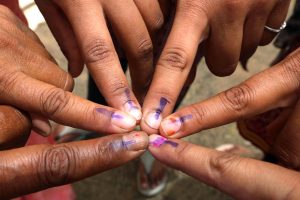Baby estuarine crocodiles have broken out of their eggshells to make their way to water bodies in and around the Bhitarkanika national park, marking the culmination of annual breeding and nesting season of these reptiles, accorded the highest protection as schedule-I species under the wildlife protection act.
Besides, the crocodiles’ eggs collected from the wild were artificially hatched at the national park hatchery. The hatchlings artificially hatched have also broken out of eggshells. They will be reared for about a year or two at the captive pond of the hatchery enclosure and then released after they turn juvenile, said Divisional Forest Officer, Rajnagar Mangrove Forest Division, Jagyandatt Pati.
This year a record number of 96 nesting sites of estuarine crocodiles were spotted in the national park.
The sight of baby crocs breaking out of eggshells and their act of loitering aimlessly before hopping into the water bodies and creeks was a visual treat to watch.
“Female crocodiles lay 50 to 60 eggs and the hatchlings usually emerge from the nests after 70 to 80 days of the incubation period. However hardly one out of every hundred baby crocs grows to become adults as their mortality rate is very high. In the wild, babies are devoured by predating aquatic animals”, said Dr. Sudhakar Kar, crocodile expert, and former senior research officer of the forest and wildlife department of the state.
Adequate conservation measures by the state forest department have led to a systematic rise in the number of these reptiles over the years, claimed officials.
The wildlife sanctuary had been kept out of bounds for tourists and visitors to ensure disturbance-free annual nesting of crocs. The animals turn violent and restive over human interference in their habitat.
The enforced restriction on entry to sanctuary was clamped on 31 May and was later lifted on the 1st week of August, said officials.
Estuarine crocodiles are also found in West Bengal’s Sundarbans, having the country’s largest mangrove cover.
Besides the mangrove wetlands in the Andaman Islands are also home to these species. But the density and population of crocodiles found in Bhitarkanika national park are more pronounced.
Incidentally, Odisha is the lone State in the country where three species of crocodiles- salt-water, gharial, and mugger- are found inhabiting the river systems.
The salt-water crocodile population in Bhitarkanika has increased manifold from 96 in 1975 to 1768 so far.
Adequate conservation measures by the state forest department in Bhitarkanika have led to a systematic rise in the number of these reptiles over the years.
Experts are of the view that Bhitarkanika houses 70% of India’s estuarine crocodile or saltwater crocodiles, conservation of which was started way back in 1975.












